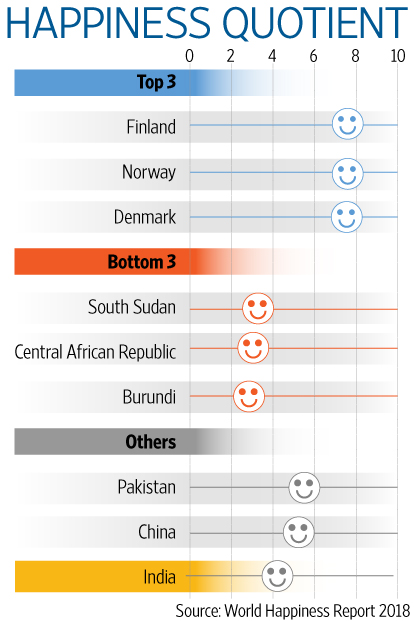The Big Picture- RSTV
State of Our Cities
TOPIC:
General Studies 1:
- Urbanization, their problems and their remedies
General Studies 2
- Government policies and interventions for development in various sectors and issues arising out of their design and implementation
In News: An assessment was carried out on the quality of laws, policies, institutions, and institutional processes – commonly called city systems in the 2017 Annual Survey of India’s City System (ASICS), by Janaagraha, a city-based non-profit. The study suggests that the city systems are the base or structure on which the quality of life of its residents depends.
For this study, four factors were taken into account to gauge the quality of life for residents of a city
- Urban planning and design
- Urban capacities and resources
- Transparency, accountability and participation
- Empowered and legitimate political representation
The study scores cities on a scale of 0 to 10. The Indian cities are also compared to benchmark cities across the world like New York and London. While both New York and London score 8.8, Indian cities struggle to cross the 5 point mark.
Rankings:
- Pune is the best Indian city to live with a 5.1 rating followed by Kolkata, Thiruvananthapuram and Bhubaneswar, each receiving a rating of 4.6.
- Capital Delhi manages a score of 4.4, while Hyderabad a 4.3. Mumbai is at 4.2, Chennai gets a 3.4 with Bengaluru at 3.

Image source: https://www.livemint.com/Sundayapp/5H1c8l1WXm4bnuMNWGgojI/Countries-and-happiness-best-governed-cities-Messis-centu.html
How has Pune gone from fourth to first position in the last three years?
- Undertook AMRUT Reforms seriously, laying down a plan in place and following it effectively.
- It has improved the share of its own revenue in total expenditure and raised the average per capita capital expenditure for the last three years. First city to use Municipal Bonds.
- It has made available online municipal staff data and a roadmap for digital governance. This led to the building of confidence and increased connect to community.
Key Messages from ASICS:
India’s cities need to address five systemic challenges in order to deliver better quality of life to citizens in a sustainable manner –
- Lack of viable spatial planning and design standards for public utilities – India has 1 urban planner per 400,000 people compared to UK’s 148 for the same
- Weak finances, both in terms of financial sustainability and accountability – more than half of the municipalities do not generate enough money to pay their salaries, 70% of the cities’ budget vary by 30%
- Poor human resource management – 35% average staff vacancy
- Powerless mayors and city councils, severe fragmentation of governance – multiple civic bodies, parastatals – multiple civic bodies with frequent change of toothless mayors, commissioners. Local government has the least amount of capability, quality of delivery and poor processes that are being followed. Most of the laws and policies that they are following are archaic.
- Total absence of systematic citizen participation and transparency – Only two cities have ward committees
The Way Ahead
Cities and their Foundation: There is a need to focus on building stronger foundations – not just focus on outcomes but also policies. Policies are very important and nobody talks about it. There is an urgent need of giving the highest importance to ‘urban designing’ and not just planning. Cities need to be seen as a unit of empowerment at the systems level.
Cities and Reforms: Reforms in the big cities have been painfully slow also due to political instability. Smaller cities under AMRUT are witnessing better transparency, accountability and participation. Finances need to not just be generated but also be managed and accounted for.
City people and City government: Government needs to meaningfully engage with the citizens. They need to update the citizens and push the envelope on the issue of discussions being done at the systemic level.
City and local body of governance: There is a need to strengthen local body’s capability and capacity to deliver. A discussion on autonomy and devolution of power is long pending. Mayors need to be empowered with decision, and be trusted for the same.
Absence of participatory citizen platforms: Citizens need to be involved and sensitized. More awareness programs in public places, schools and colleges need to be conducted.
Must Read Articles: Link 1 + Link 2 + Link 3 + Link 4
Connecting the Dots:
- For India to make urbanisation sustainable, it must first tackle the problems of multiplicity of jurisdictions, weak revenue base and human resource capacity deficit that impact most of its cities. Analyse.













